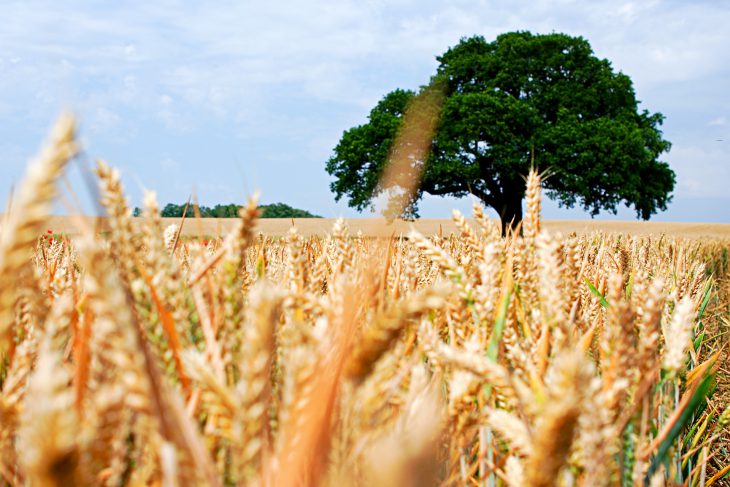Microbes can affect our health, but humans are not alone in this. Plants are also susceptible to microbial infections, some of which attack through the roots. The rhizosphere is the zone of soil around plant roots and is home to a diverse community of bacteria, fungi, and protozoa. This community is called the plant’s microbiome.
Many of these soil microbes are beneficial to the plant. The plant releases nutrients into the soil that the microbes living near or on the roots can consume. In turn, the microbes release other nutrients to the soil that help the plant grow. Diverse microbiomes provide a greater variety and amount of nutrients to the plant compared to a microbiome that does not contain as much variability. The health of the plant therefore affects the health of its microbiome. If something were to damage the microbiome, then the plant would suffer.
Wheat is a crop that provides an enormous amount of food, “with 735 million tons of grain harvested annually” (Rossmann et al., 2020). Wheat used to be a wild plant but became domesticated 10,000 years ago. When plants are domesticated, their genes and appearance change. It is possible that some of these genetic changes could affect wheat’s microbiome.
In a recent study, a team led by Dr. Maike Rossmann investigated whether wheat domestication has affected its microbiome. They also wanted to learn about the role that another group of soil organisms, called protozoa, play in the rhizosphere. Protozoa are not bacteria and can include parasites.
They grew eight genetically different varieties of wheat, ranging from wild to domesticated, in two types of soil. One soil type was collected from agricultural land known to have grown wheat. The other soil was collected from a forest and was used as the control soil. Four plants of each wheat variety were grown to maturity in each soil type. The researchers sampled the soil around the roots while the plants were in the flowering stage. Then, they used a technique called rRNA gene sequencing to identify the microbes present in the rhizosphere soil. This method allows scientists to compare the gene sequences from the samples to a database of known bacterial DNA sequences with the hopes of finding matches, not unlike DNA fingerprinting.
The domesticated wheat had a very different rhizosphere microbiome compared to the wild varieties. The domesticated wheat had a less diverse microbiome, meaning the soil around it did not have as many different types of bacteria and fungi compared to the wild plants. The researchers concluded this indicates that domesticated wheat is not able to either select for or support the same diversity as wild wheat regardless of what soil type it was grown in. This is a problem because a less diverse microbiome leaves the plant susceptible to pathogens.
The researchers also discovered that both the wild and domesticated wheat microbiomes contained predatory protozoa called Cercozoa. Cercozoa are a group of single-celled organisms that can be found in freshwater and soil environments. These carnivorous protozoa eat bacteria, fungi, and other protozoa present in the rhizosphere. Like a lion controlling the gazelle population, the Cerazoa helps control the fungal and bacterial populations of the plant microbiome.
There are many different kinds of Cercozoa, and, like the fungal and bacterial communities, Cercozoa were more diverse in the rhizosphere of the wild wheat compared to the domesticated wheat. Wild wheat also had more complex microbial interactions, indicating that its ecosystem is more stable than domesticated wheat. As a system loses its complexity, it becomes more vulnerable to harmful events like disease. This finding is important because it shows how protozoa contribute to the rhizosphere ecosystem.
The more we know about how domestication affects the microbiome of plants, the more we can harness these relationships between the microbes and plants to improve plant health and make crops more resilient. An improved selection process will allow the wheat to have a more diverse microbiome, which will in turn allow the wheat to gain more nutrients. The more nutrients the wheat receives, the more food it can produce. Future studies can also be conducted to determine how plant breeding could lead to a more diverse and sustainable microbial community in domesticated wheat.


